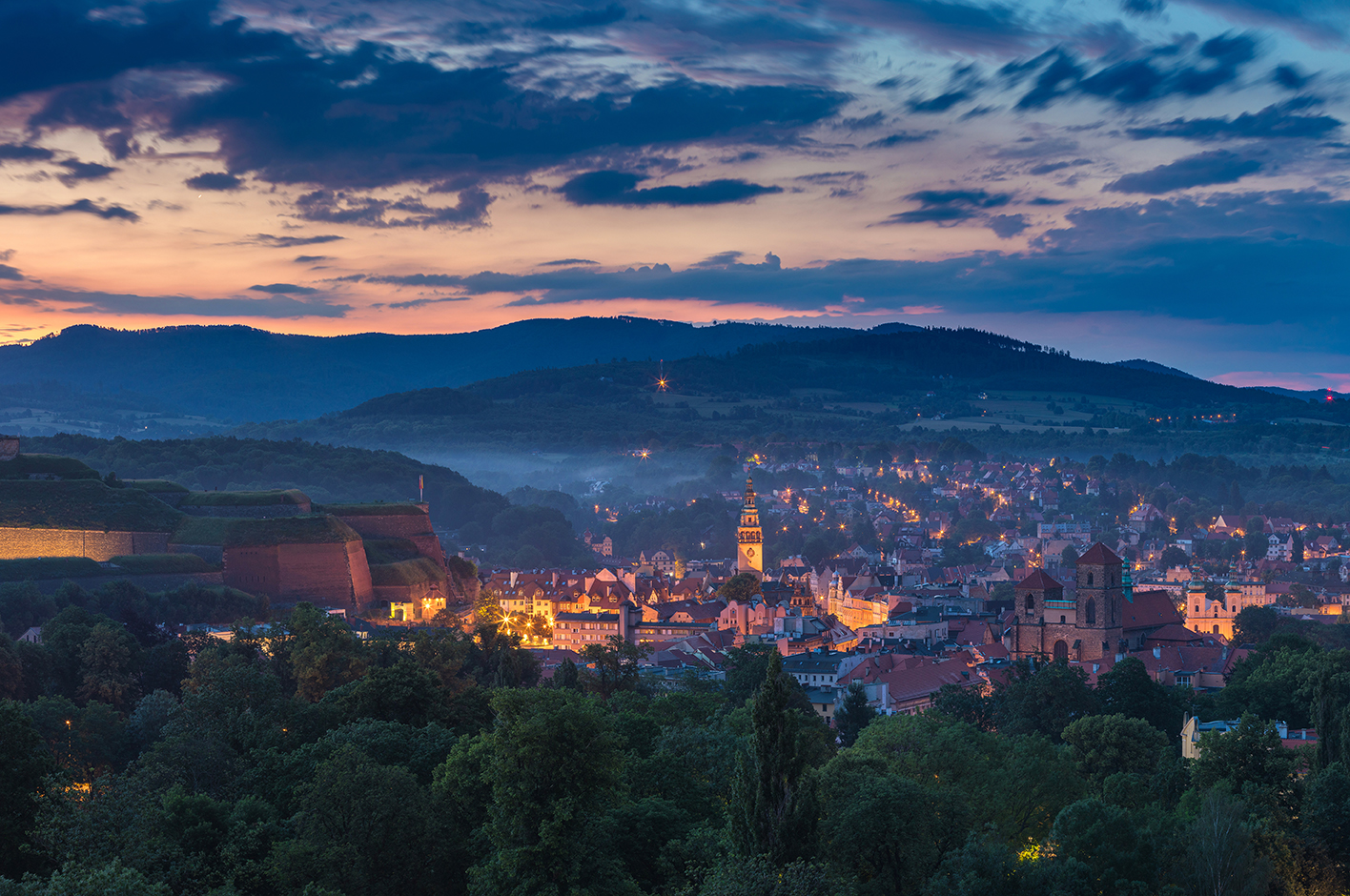For
tourists
Kłodzko is one of the most beautiful towns of the Lower Silesia region with over 1,000 years of abundant history shared by Czechs, Germans and Poles. These three cultures have had the greatest influence on the development of the town, its economic and social life, as well as its shape and nature.
Over the years, Kłodzko served a number of vital economic, social, and military functions within the region. It was a trade settlement, a town of craftsmen and merchants, and a military garrison. It was also a town of important events, a mecca for artists, and an influential religious centre.
Download the guide
Click on the download button to download the brochure "Kłodzko in seven days" in .pdf format
Today, Kłodzko is a popular culture and tourist centre in the Kłodzko Valley, and the capital of Kłodzko County. With a variety of unique attractions, Kłodzko is a popular destination for visitors of all ages and interests: whether younger or older, tourists seeking a peaceful place to stay or active leisure opportunities, as well as military, history, and culture buffs. Throughout the year Kłodzko holds regular and one-off culture, sport and leisure events: music festivals and concerts (organ, guitar and accordion concerts in particular), music performances by choirs, soloists, and bands, Kłodzko Days, Fortress Days, The International Theatre Festival “Clash”, Oktober Festung, Open Summer Festival, and the Lower Silesian Rally. You can enjoy traditional fairs during holidays or town day celebrations, with lots of opportunities to enjoy regional products and buy unique souvenirs.

Do not be surprised to hear a cannon being shot roaring through the air, to see a Prussian soldier parading down the street in a historical army uniform, a lady in a historic costume, or perhaps even a medieval knight. If you are lucky, you can spot a colourful procession of actors participating in a theatre festival or hear organ sounds flowing from inside a nearby church. This is because the cultural tradition of Kłodzko is as rich as its history.
With its splendid architecture, historical sites, works of art, magical places, and full calendar of events, Kłodzko offers the unique atmosphere of a hospitable, open and friendly town.
The history of the Kłodzko Fortress may briefly be described as follows: a hill – a town – a castle – a fortress. From 369 meters above sea level (the height of Fortress Hill), the entire region can be seen. Today, it can be admired from the observation bastion of the fortress. Before first town was established on the hill, people were mainly preoccupied with securing a food supply and ensuring survival. Therefore, they leveraged the natural potential of the site. The Neisse provided water and food while the hill provided safety. Once the town was built, this strategic site was then further adapted throughout ages to meet the needs and threats of the times.
Soon, the newly-built town, located at the foot of the castle, needed protection too. Accordingly, the town fortifications were built (built of brick since the 13th century), consisting of a double wall. The town could be entered via one of the four gates – the Bohemian Gate (from Czeska Street), the Ząbkowicka Gate (from Łukasińskiego Street), the Green Gate (from Wojska Polskiego Street) and the Bridge Gate (from Wita Stwosza Street). Today, remnants of the monumental town walls can be seen from St. John’s Bridge or from the square under the bridge.
It was King Frederick the Great who made the biggest contribution to ensuring the building of the power of the fortress. At his request, in 1742 a plan to strengthen the structure was drafted; the castle keep was built at that time, shielded by a series of defensive features: bastions, tenailles, redoubts, redands and moats. These did not, however, rescue the fortress from capitulation and subsequent surrender to Napoleon’s troops during the siege of 1807.
By the end of the 19th century, the fortress was no longer the most suitable site for troops to be stationed and its military function gradually ceased. The garrison general staff was moved to one of the buildings on the northern side of the market square, and barracks were built all over Kłodzko. Some of them no longer exist, but some buildings which now fulfil other roles, have been very well preserved. On Szkolna Street, there is a large staff and barracks complex (now a school), where Field Marshal von Moltke’s regiment used to be stationed. From 1905, the regiment troops began to be barracked on Wyspiańskiego Street. The largest military warehouses in Kłodzko were located on Łukasińskiego Street.
In addition to visiting the grounds of the fortress, you may also want to reserve some time for entering the counter-mine galleries to see, in the Great Tenaille, a presentation of everyday life in the old fortress.
The Kłodzko Fortress hosts : the Kłodzko Fortress Days with the Fortress Battle, the Fortress Fair, the Oktober Festung, the Medieval Spring and the Fortress Night.
The Fortress is also home of the 47th Prussian Infantry Regiment re-enactment group.
Military enthusiasts can also visit other fortresses near Kłodzko, including Srebrna Góra (24 km from Kłodzko), Nysa (52 km from Kłodzko) and Jaroměř in the Czech Republic (63 km from Kłodzko).
Did you know?:
In the thirties, the Frederick Days were celebrated riotously in Kłodzko, with a parade, a grand ceremony to welcome King Frederick the Great (mounted on a white horse), military drill displays, a ball, court dance shows in the courtyard of the castle keep, and a fireworks display.

